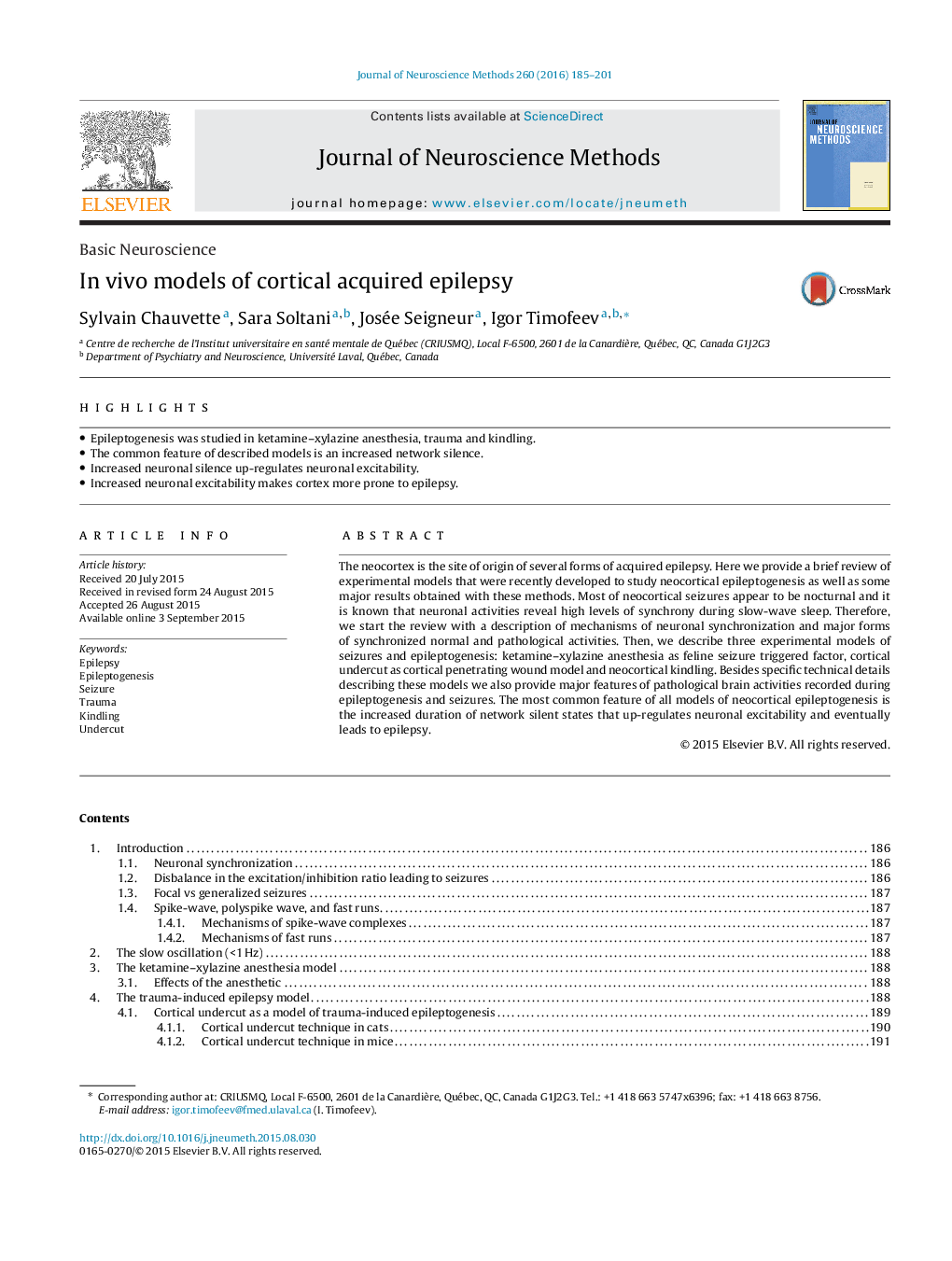| کد مقاله | کد نشریه | سال انتشار | مقاله انگلیسی | نسخه تمام متن |
|---|---|---|---|---|
| 6267971 | 1614609 | 2016 | 17 صفحه PDF | دانلود رایگان |

- Epileptogenesis was studied in ketamine-xylazine anesthesia, trauma and kindling.
- The common feature of described models is an increased network silence.
- Increased neuronal silence up-regulates neuronal excitability.
- Increased neuronal excitability makes cortex more prone to epilepsy.
The neocortex is the site of origin of several forms of acquired epilepsy. Here we provide a brief review of experimental models that were recently developed to study neocortical epileptogenesis as well as some major results obtained with these methods. Most of neocortical seizures appear to be nocturnal and it is known that neuronal activities reveal high levels of synchrony during slow-wave sleep. Therefore, we start the review with a description of mechanisms of neuronal synchronization and major forms of synchronized normal and pathological activities. Then, we describe three experimental models of seizures and epileptogenesis: ketamine-xylazine anesthesia as feline seizure triggered factor, cortical undercut as cortical penetrating wound model and neocortical kindling. Besides specific technical details describing these models we also provide major features of pathological brain activities recorded during epileptogenesis and seizures. The most common feature of all models of neocortical epileptogenesis is the increased duration of network silent states that up-regulates neuronal excitability and eventually leads to epilepsy.
Journal: Journal of Neuroscience Methods - Volume 260, 15 February 2016, Pages 185-201